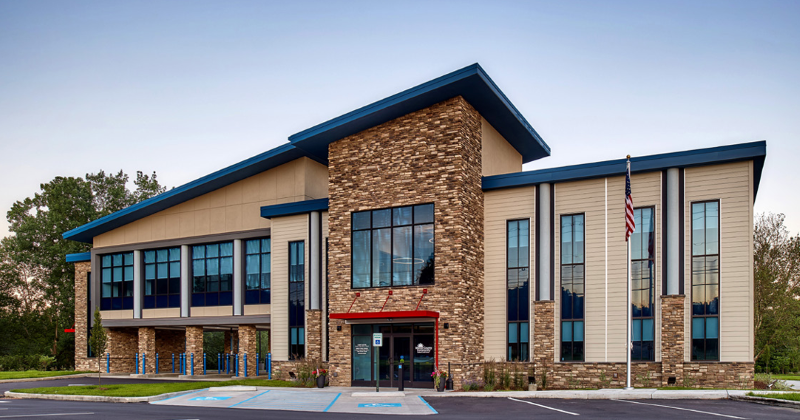The Art and Science of Branch Transformation
An effective Facilities Transformation Plan involves a holistic approach that encompasses innovative technologies, personalized consumer experiences, and strategic operational enhancements to drive meaningful impact and long-term growth. Below are the key elements of transformative facilities planning that financial institutions (FIs) must consider to thrive in an increasingly dynamic and consumer-centric marketplace.

SCIENCE OF SPACES
When planning to transform a space, careful consideration of spatial elements such as equipment positioning, branch flow, and digital integration to enhance consumer attraction, engagement, and preparation for personalized interactions. This includes the strategic design of greeting and meeting areas to facilitate concierge services, as well as private spaces to foster deeper and more meaningful conversations. By focusing on the science of space, financial institutions can create a dynamic and consumer-focused environment that promotes seamless interactions and strengthens relationships with clients.
ART OF DESIGN
Transformation encompasses the art of design, which involves interpreting data, drawing on experience and expertise, and envisioning innovative solutions using space, color, furniture, and design elements. By embodying brand identity and organizational culture in the physical space, FIs can create a cohesive and immersive environment that resonates with consumers. This approach not only aims to provide comfortable surroundings but also encourages action and engagement, ultimately enhancing the overall client experience while driving positive outcomes for the institution.

INTEGRATION OF KEY ELEMENTS
Increasing engagement and sales involves the seamless integration of various elements to enhance the overall consumer experience. This includes strategic merchandising techniques that effectively guide visitors to consider new products and services. Additionally, leveraging digital platforms to reinforce these options through targeted messaging and personalized recommendations plays a crucial role in capturing consumer interest. Interactive tools, such as digital touchscreens and concierge service with technology, further enhance the consumer journey by providing detailed explanations of available options and prompting users to take action through clear calls-to-action. By combining these elements effectively, financial institutions can drive engagement and ultimately boost sales.
DATA DRIVEN INSIGHT
Data-driven insights inform the strategic decision-making process. This includes leveraging data pertaining to the organization’s internal operations and business strategy, allowing for a deeper understanding of performance metrics and areas for improvement. Furthermore, analyzing data related to consumer behavior, both current and prospective, provides valuable insights into preferences, purchasing patterns, and market trends. Additionally, gathering data on location trends, community demographics, and psychographic information offers a comprehensive view of the target audience, enabling institutions to tailor their product offerings and marketing strategies accordingly. By harnessing the power of data-driven insights across these key areas, institutions can drive transformative change and stay ahead in today’s competitive market landscape.
IMPROVE EXPERIENCE
Transformation initiatives are aimed at enhancing the overall consumer experience, and it is essential to find ways to measure the impact of these efforts effectively. One way to measure the results of transformation is through Return on Experience (ROE) data, which evaluates the value generated from investments made in improving consumer interactions and satisfaction. By analyzing ROE data, financial institutions can quantify the impact of transformation on consumer loyalty, retention, and overall profitability. Utilizing Net Promoter Score (NPS) surveys can quantify valuable insights into client satisfaction levels and their likelihood to recommend the brand to others. By tracking and analyzing these key metrics, FIs can gauge the success of their transformation efforts and make informed decisions to further enhance the consumer experience.
A successful branch transformation involves leveraging expertise in both art (design and branding expertise) and science (data, business analysis, and construction) to execute solutions that don’t compromise creativity, culture, integrity, or quality. By working with a solutions provider that prioritizes these elements, financial institutions can ensure that their transformation efforts are carried out effectively, efficiently, and with a commitment to excellence.
Contact us today to discuss your branch transformation ideas.

A successful branch transformation involves leveraging expertise to execute solutions that don’t compromise creativity, culture, integrity, or quality.




